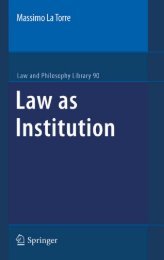THEORY OF CONSTRAINTS
THEORY OF CONSTRAINTS
THEORY OF CONSTRAINTS
Create successful ePaper yourself
Turn your PDF publications into a flip-book with our unique Google optimized e-Paper software.
fied the stars according to these sectors. Within this broad classificationthey invented an elaborate subclassification, coloring thenight sky with their vivid imaginations and succeeding to etchabove us most of their stormy mythology. Some stars they observed"refused" to stay in one sector, so they classified thesewandering stars in a class of their own—the planets. This mammotheffort had its own practical use. It created a common terminologyand today it still has some use in navigation, even thoughwe must admit that its principal use is in horoscopes.The second stage started with Ptolemy in Alexandria about twothousand years ago. This wise man postulated the first knowncorrelation on this subject. The planets move along a circle, whosecenter moves along another circle, whose center is the earth. Thiscorrelation has been improved upon by others, who have moreprecisely pinpointed the radii of the circles and even added morecircles to an already quite complicated model. These efforts certainlybore fruits. They enabled us to predict eclipses and to forecastthe position of the planets in tomorrow's skies.The correlation stage is not a stand-still stage. It has its turbulencesand fierce debates. Copernicus aroused a somewhat sleepycommunity by his daring suggestion that a much more powerfulcorrelation would be achieved and if we put the sun as the centerof the planet's orbits. Kepler created another turbulence by suggestinga correlation based on elliptical orbits rather than thealmost holy circular ones. It should be noted that in the correlationstage, even though it is based on careful observations andoften involves substantial mathematical computations, the questionWHY is not asked at all. Rather the question HOW is thecenter of interest.The man who moved this subject into the effect-cause-effectstage is known to everybody—Sir Isaac Newton. This man was thefirst to insist on asking the question: WHY? He had the courageto ask it not only about remote planets but about seemingly mundaneday-to-day events. Why do apples fall down rather than flyingin all directions? How easy it is to shrug off such a trivialquestion by the impertinent answer—"that is the way it is." Newtondidn't; instead he assumed a cause for this phenomenon. Heassumed the gravitational law. He suggested that if we assumethat any two bodies attract each other in proportion to theirmasses and in reciprocal proportion to the distance between them25




